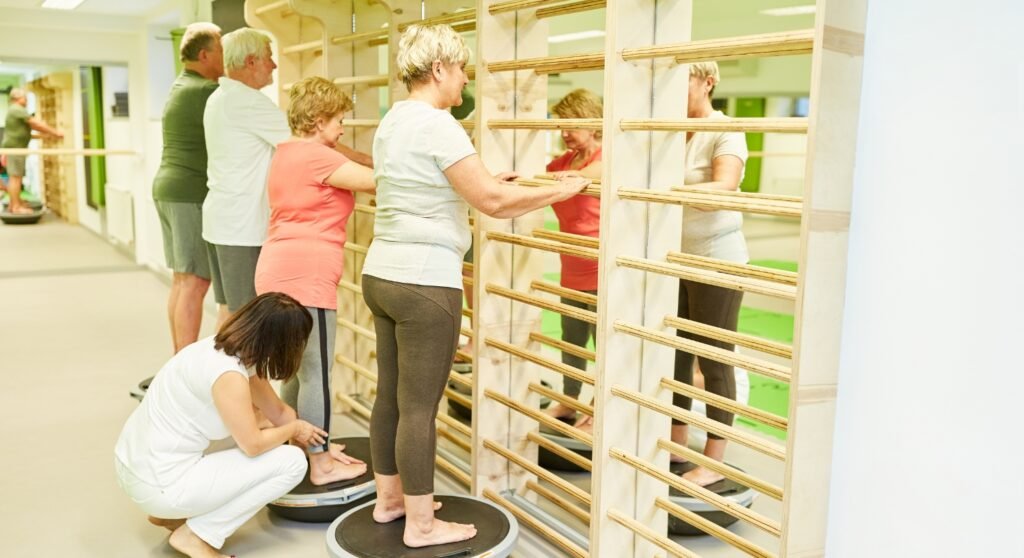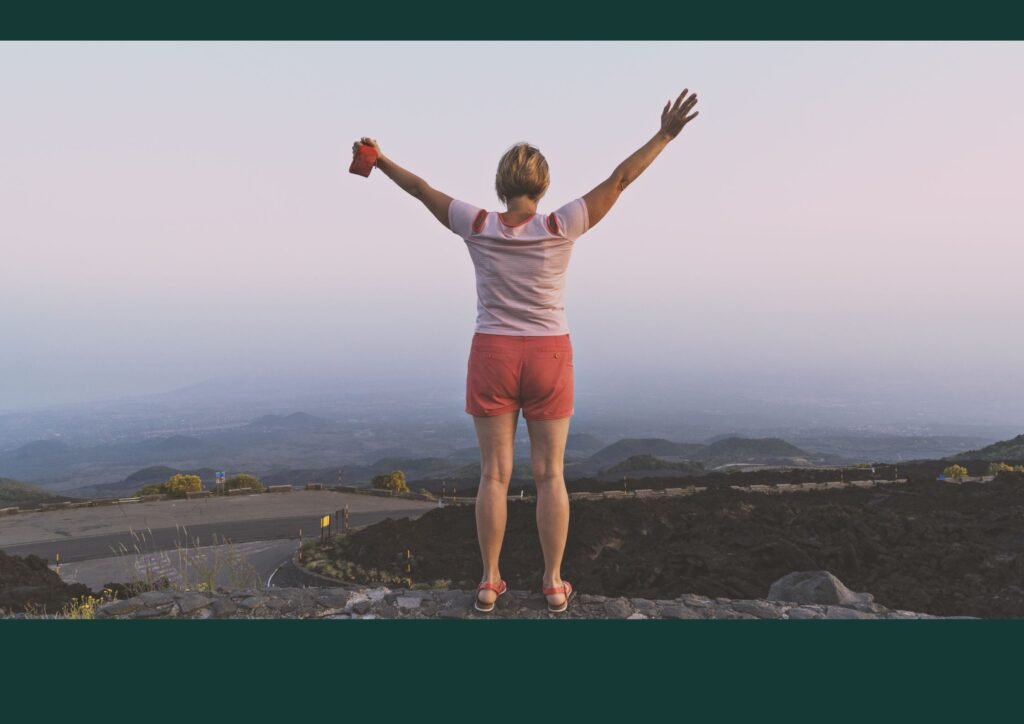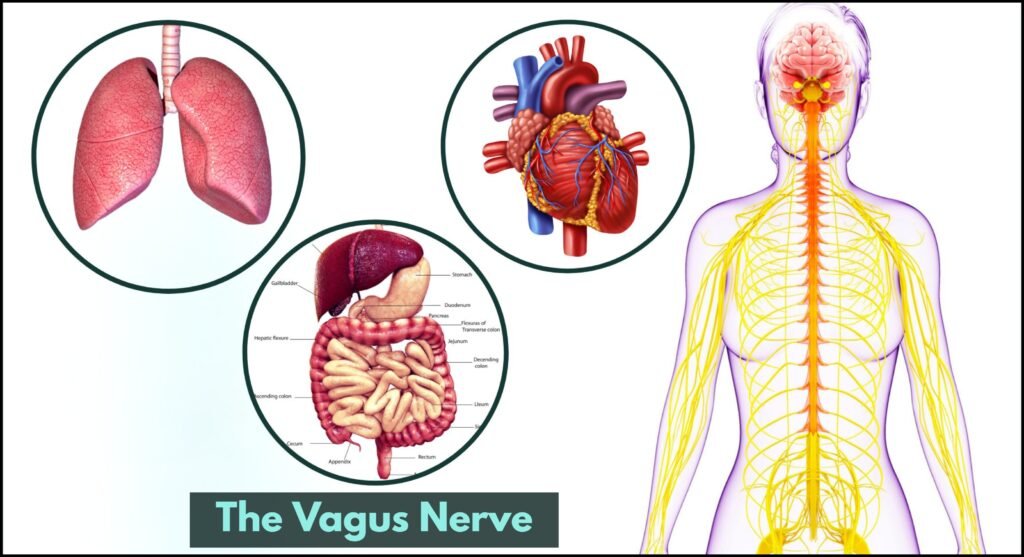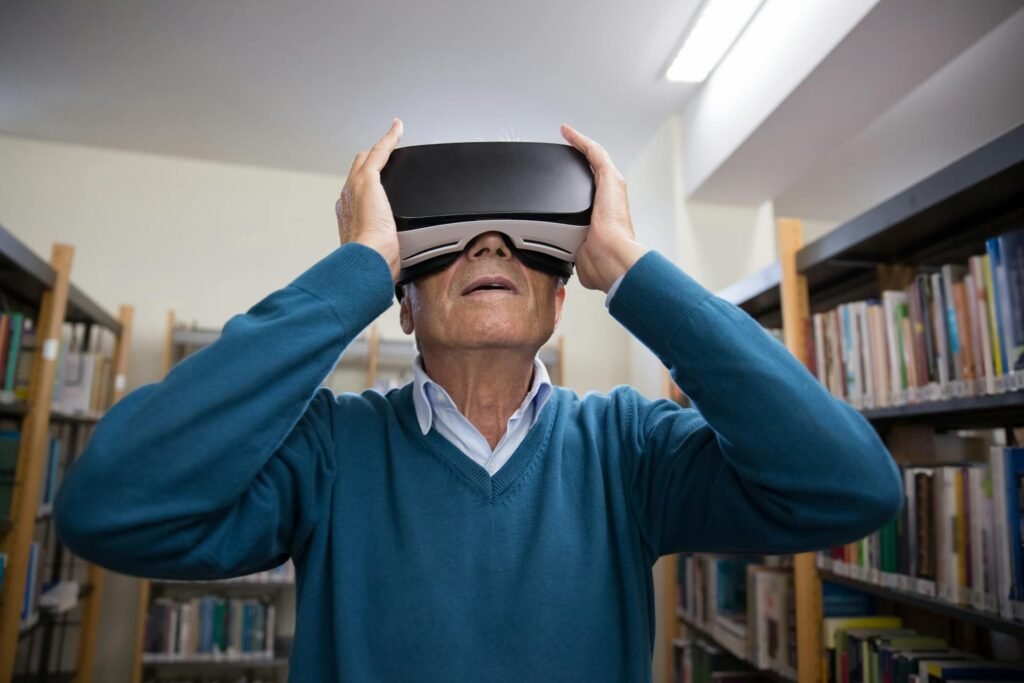Senior Yoga and Meditation: Promoting Great Wellness and Vitality in Later Years
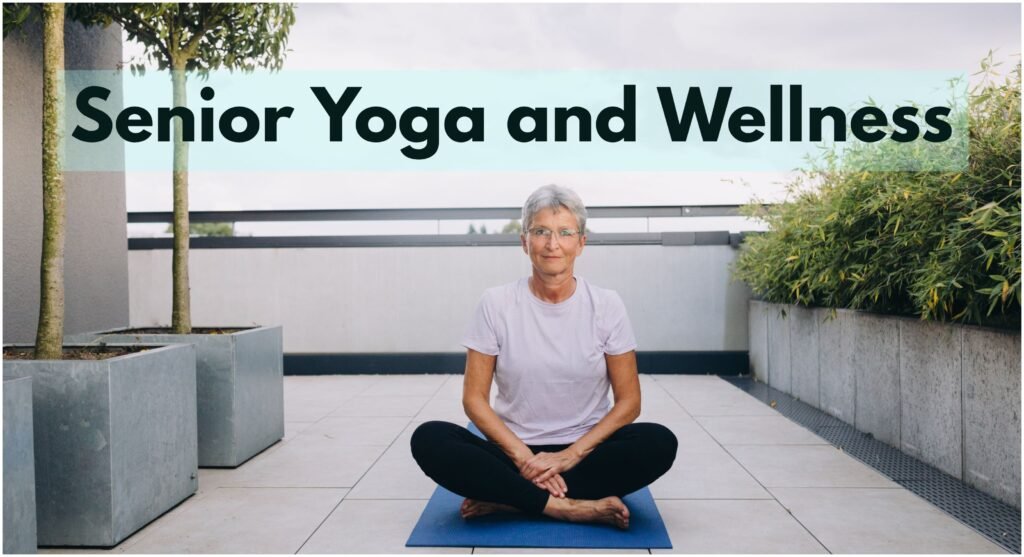
Last Updated on June 30, 2025 by Julian Espinosa
Discover the transformative power of yoga and meditation in your retirement years. These ancient practices offer a holistic approach to wellness that’s perfectly suited for seniors seeking to maintain flexibility, strength, and mental clarity.
Research shows that yoga and meditation provide remarkable benefits for older adults, from improving balance and reducing fall risk to enhancing cognitive function and alleviating anxiety. With gentle, adaptable techniques designed specifically for mature bodies, you can embark on a journey toward greater vitality regardless of your current fitness level.
Our comprehensive guide explores how these mindful practices can help you manage chronic pain, deepen social connections, and cultivate a profound sense of well-being during this rewarding phase of life.
Ready to roll out your mat and discover a practice that nurtures both body and mind? Let’s explore how senior yoga and meditation can become your pathway to vibrant aging.
How to Promote Wellness and Vitality in Later Years thru Senior Yoga and Meditation
In our bustling world today, where stress and worry seem to tag along at every step, it’s crucial to prioritize mental and physical well-being. That’s where senior yoga and meditation become powerful allies in your wellness journey!
As we navigate the retirement years, focusing on sustaining a healthy lifestyle becomes increasingly essential. Senior yoga and meditation provide a comprehensive approach to wellness, empowering mature individuals to enhance their overall quality of life through mindful movement and focused awareness.
Prefer to listen rather than read?
Why Senior Yoga and Meditation Matter?
As we grow older, our bodies go through changes, making us less flexible, weakerAs we mature, our bodies experience natural changes, making us less flexible and sometimes less steady on our feet. Many seniors find themselves dealing with challenging emotions like stress, worry, or occasional feelings of sadness.
Recent research confirms what practitioners have known for centuries – yoga and meditation offer tremendous benefits for older adults. The beauty of these practices lies in their adaptability. Whether you’re completely new to yoga or returning after a break, there’s a gentle approach waiting for you.
Yoga and meditation create a foundation for wellness that addresses both physical strength and mental resilience – qualities that become increasingly valuable as we age.
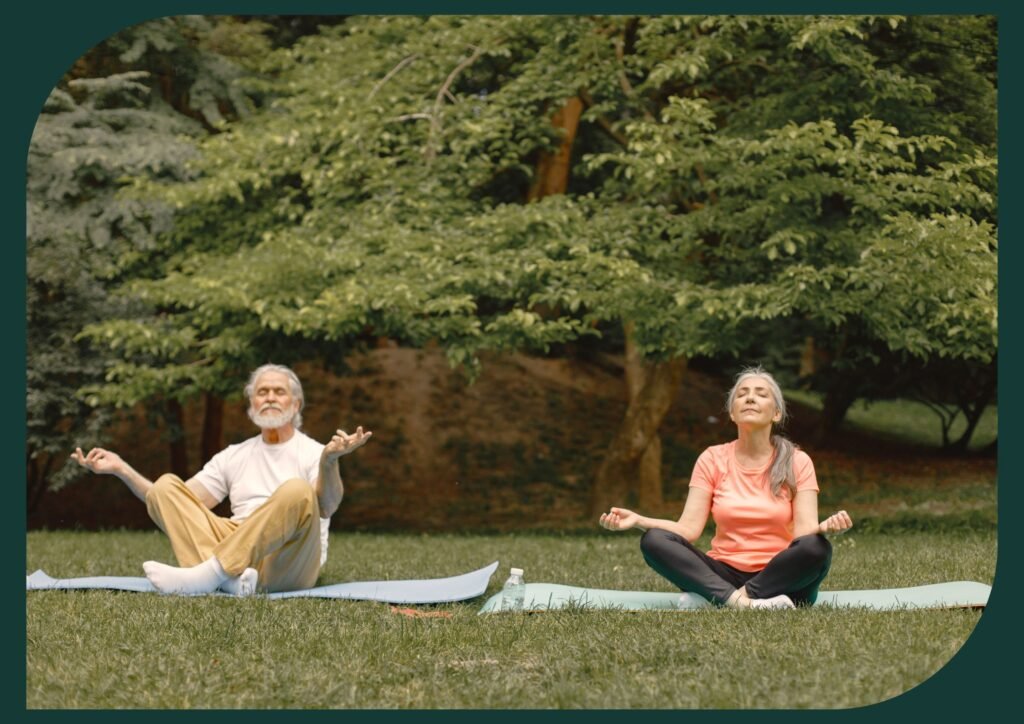
Benefits of Senior Yoga
Senior yoga brings together gentle stretches, balance exercises, and breathing techniques that can have a profound impact on physical health.
Some of the key Physical benefits include:
- Improved flexibility and joint mobility
- Enhanced muscle strength and tone
- Better posture and balance
- Increased energy levels
- Boosted immune system
- Reduced risk of chronic conditions such as arthritis and osteoporosis
- Alleviated aches and pains
- Improved sleep quality
Research published in 2024 in Scientific Reports found that yoga practice has grown significantly among adults over 65, with participants reporting substantial improvements in mobility and reduced pain levels. This isn’t surprising when you consider how yoga’s gentle movements help maintain joint function and muscle strength without the harsh impact of more strenuous exercises.
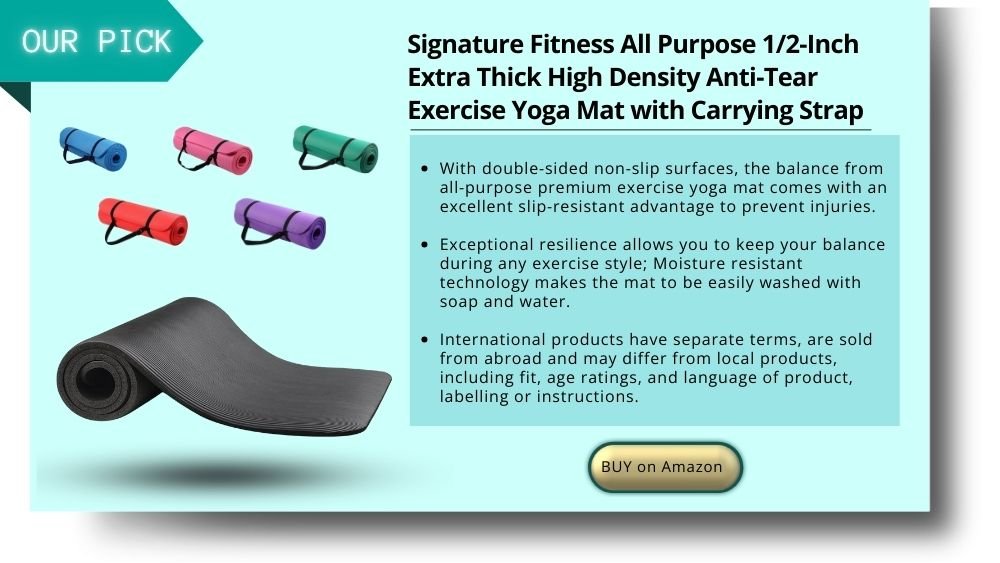
On the mental and emotional front, senior yoga and meditation help in:
- Reducing stress and anxiety
- Enhancing mood and emotional well-being
- Boosting cognitive function and memory
- Cultivating self-awareness, compassion, mindfulness and present-moment awareness
- Fostering a sense of calm and inner peace
- Enhancing focus and concentration
- Promoting better sleep patterns
A 2024 study from Harvard Medical School demonstrates that yoga actually makes your brain work better by strengthening parts responsible for memory, attention, and language – essentially serving as “weightlifting for the brain.” The research showed that regular practitioners had a thicker cerebral cortex and hippocampus compared to non-practitioners, indicating better cognitive function.
Getting Started with Senior Yoga: Essential Tips
Before embarking on a senior yoga journey, it is important to keep a few essential tips in mind:
- Consult with a healthcare professional
- Checking with your healthcare provider is essential before beginning any new exercise regimen, especially for seniors.
- Discussing your specific health conditions allows for personalized recommendations to ensure safety.
- Your doctor can identify any movements or positions you should modify or avoid based on your health profile.
- This consultation provides peace of mind, allowing you to proceed with confidence.
- Find a qualified instructor
- Look for teachers with specific training in working with older adults – their specialized knowledge makes all the difference.
- Seek instructors who understand the unique needs of senior bodies and can offer appropriate modifications.
- Many community centers, senior centers, and yoga studios now offer classes designed specifically for mature practitioners.
- An experienced instructor will help you navigate challenges safely while honoring your body’s wisdom.
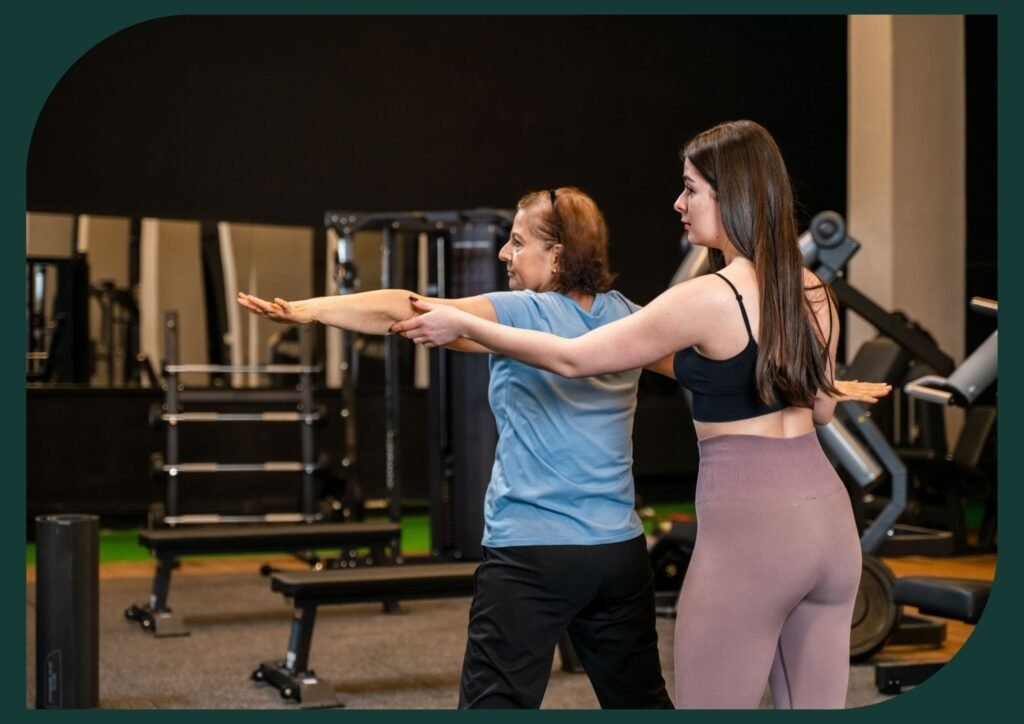
- Start slow and be gentle
- Begin your yoga journey at a comfortable pace that respects your current abilities.
- Senior yoga is all about honoring your body’s unique capabilities and limitations.
- Simple poses that are accessible and comfortable provide the perfect foundation. Focus on mastering the fundamentals before gradually progressing to more challenging movements.
- Avoid pushing yourself too hard or attempting advanced poses prematurely.
- Listen to your body
- Pay close attention to how your body responds during practice.
- Respect your physical boundaries and avoid overexertion or positions that cause pain.
- Remember that discomfort and pain are different sensations – gentle stretching may feel unfamiliar but should never be painful.
- If something doesn’t feel right, modify the pose or take a rest.
- The goal is progress, not perfection – your journey is uniquely yours.
- Practice regularly
- Consistency is key to experiencing the full benefits of yoga and meditation.
- Establish a regular schedule that works with your lifestyle, whether it’s a few sessions per week or shorter daily practices.
- Regular practice builds strength, flexibility, and confidence over time.
- As your body adapts, you’ll notice improvements in balance, mobility, and overall well-being. Even short, consistent sessions deliver significant benefits over time.
Gentle Yoga Poses for Seniors
Senior yoga incorporates a range of gentle poses that improve flexibility, strength, and balance. Some suitable poses for seniors include:
- Mountain Pose (Tadasana)
- This standing pose helps improve posture and promotes balance.
- It strengthens the thighs, knees, and ankles while grounding your practice.
- Mountain pose teaches proper alignment and builds body awareness.
- This foundational posture creates stability and confidence for other standing poses.
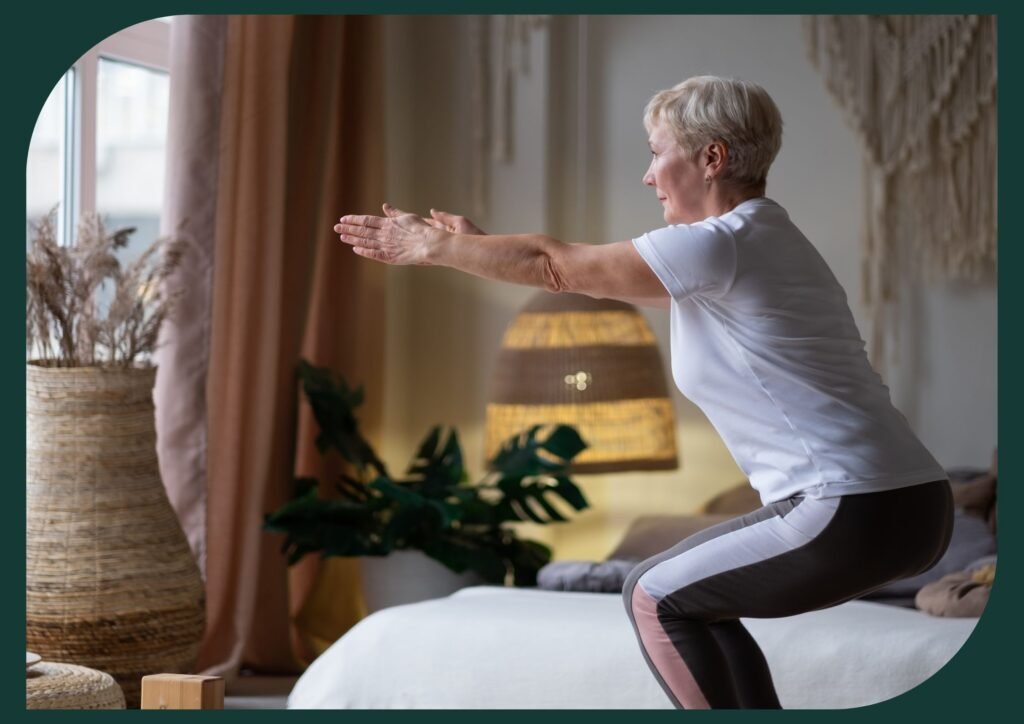
- Chair Pose (Utkatasana)
- A seated pose that strengthens the lower body and core muscles.
- This posture can be practiced using a sturdy chair for support.
- Chair pose builds strength in the legs while providing stability.
- Regular practice improves daily functional movements like sitting and standing.
- Tree Pose (Vrikshasana)
- Enhances balance, stability, and focus. This pose can be modified by keeping one foot on the ground or using a wall or chair for support.
- Tree pose strengthens the legs and ankles while improving concentration.
- The balancing aspect helps prevent falls by enhancing proprioception (body awareness in space).
To practice mindfulness meditation, find a quiet space, sit comfortably, and focus your attention on your breath or a chosen object. Allow thoughts to come and go without judgment, and gently bring your focus back to teh present moment whenever your mind wanders.
Creating a Suitable Environment for Senior Yoga and Meditation
Creating a serene and comfortable environment is essential to optimize the effectiveness of senior yoga and meditation sessions. Here are some tips to help you set up an ideal space:
Choose a Quiet and Well-Ventilated Space
- Find a room or corner in your home that is away from noise and distractions.
- Ensure good airflow to keep the area fresh and comfortable during practice.
- Select a space with pleasant natural lighting when possible, or use soft, warm lighting.
- A peaceful environment helps you focus inward and maintain concentration.
Remove Distractions Such as Electronic Devices
- Keep your cell phone, tablets, and other electronic devices away or on silent mode.
- Minimize interruptions by choosing a time when household activity is low.
- Consider using a “do not disturb” sign if you share your living space with others.
- Creating tech-free time allows your mind to truly settle into the present moment.
Play Soft, Soothing Music if Desired
- Gentle instrumental music can enhance relaxation during your practice.
- Choose calming sounds like nature recordings, soft piano, or specifically designed meditation music.
- Keep the volume low – the music should support your practice, not dominate it.
- Some practitioners prefer silence, so experiment to discover what works best for you.
Use Dim Lighting or Natural Light
- Natural daylight creates a peaceful atmosphere for morning or afternoon sessions.
- For evening practices, use soft lamps or dimmed lights rather than harsh overhead lighting.
- Consider using candles (safely placed) to create a tranquil ambiance.
- Appropriate lighting helps signal to your body that it’s time to relax and turn inward.
Decorate the Space with Plants or Calming Elements
- Incorporate elements of nature into your practice space when possible.
- Houseplants not only beautify your environment but also improve air quality.
- Consider meaningful objects that bring you joy or peace, such as a special stone or photograph.
- Creating a visually pleasing space makes your practice time more inviting and enjoyable.
By implementing these tips, you can create a tranquil and inviting environment that supports your senior yoga and meditation practice. This dedicated space will help you enter a state of deep relaxation, focus, and introspection, enhancing the overall experience and benefits of your sessions.
Breathwork Techniques for Seniors: Enhancing Well-being and Relaxation
Conscious breathing exercises, also known as pranayama, are an essential aspect of senior yoga and meditation. Some beneficial breathing techniques include:
Deep Belly Breathing
Deep belly breathing is a powerful breathing technique that promotes relaxation and reduces stress. To practice this technique, find a comfortable seated position and close your eyes. Inhale deeply through your nose, allowing your belly to expand fully.
Feel the breath filling your entire abdomen. As you exhale, slowly release the breath through your mouth, letting go of any tension or stress. Focus on the sensation of your breath as it moves in and out of your body. Deep belly breathing activates the body’s relaxation response, calming the mind and bringing a sense of peace and tranquillity.
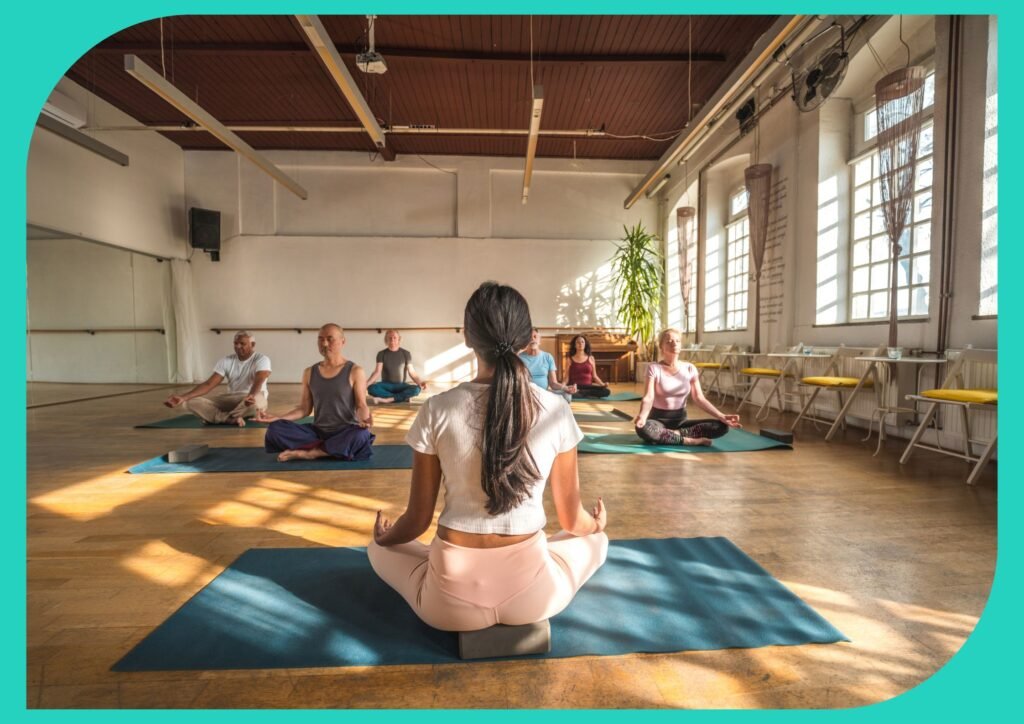
Alternate Nostril Breathing
Alternate nostril breathing, also known as Nadi Shodhana, is a balancing and calming breathing technique. Start by sitting comfortably and using your right hand.
Place your thumb on your right nostril to close it, and inhale deeply through your left nostril. Close your left nostril with your ring finger, and exhale through your right nostril. Then, inhale through the right nostril, close it with your thumb, and exhale through the left nostril.
Continue this pattern, alternating the nostrils with each breath. Alternate nostril breathing helps to balance the flow of energy in the body, clears the mind, and promotes a sense of calm and equilibrium.
Sama Vritti (Equal Breathing)
Sama Vritti, or equal breathing, is a simple yet effective breathing technique that brings balance and calmness to the mind and body. Begin by finding a comfortable seated position.
Inhale through your nose to a count of four seconds, allowing the breath to fill your lungs completely. Then, exhale through your nose for the same count of four seconds. Focus on maintaining an equal duration for both the inhale and exhale.
As you continue this pattern, you will notice a sense of rhythmic flow and balance in your breath. Sama Vritti helps to calm racing thoughts, regulate the breath, and bring about a state of mental and emotional harmony.
Experiment with each technique and find what resonates best with you. Whether it’s deep belly breathing, alternate nostril breathing, or sama vritti, these techniques offer valuable tools for finding inner peace and connecting with the present moment. Take the time to explore and embrace the transformative power of your breath.
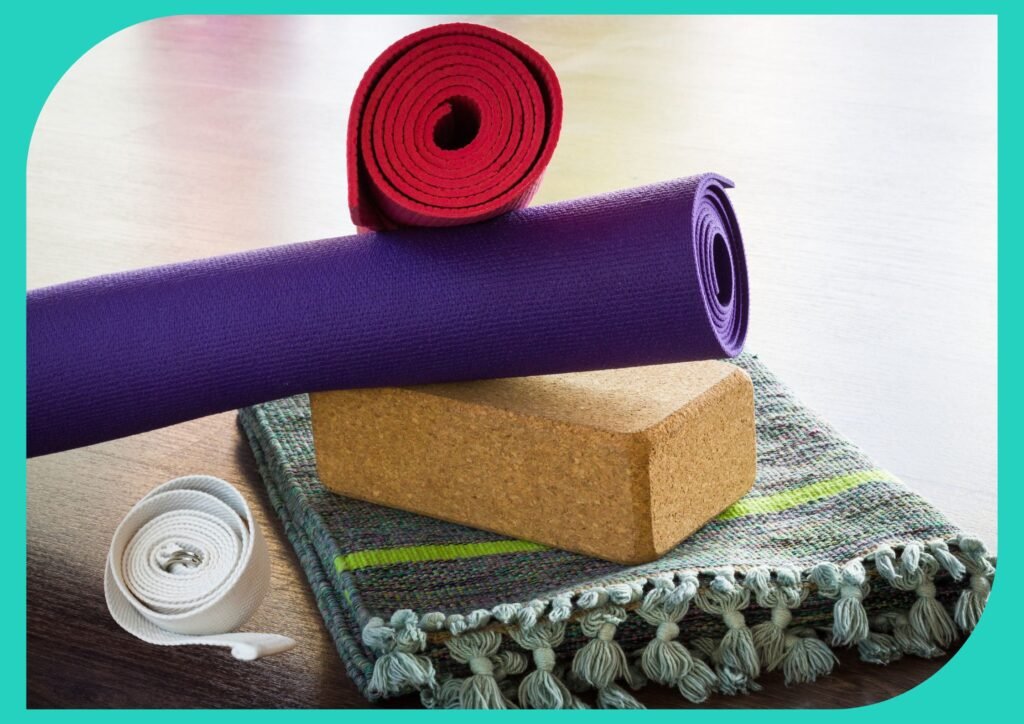
The Role of Yoga Props in Senior Yoga Practice
Yoga props play a crucial role in enhancing senior yoga and meditation practice by providing additional support, stability, and comfort. As seniors may have unique physical considerations and limitations, these props offer valuable assistance in modifying poses and ensuring a safe and enjoyable experience.
Yoga Blocks
Yoga blocks are versatile props that can be used to modify poses, particularly for seniors with limited flexibility or mobility. These blocks provide height and support, allowing individuals to comfortably reach the ground or provide stability in various standing poses. They can be placed under the hands, feet, or seat to help achieve proper alignment and make poses more accessible.
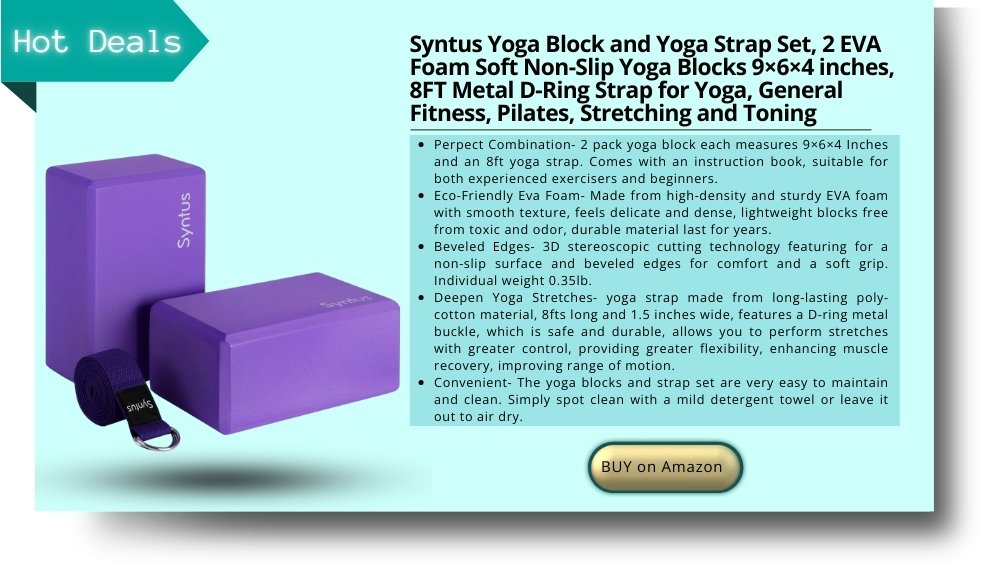
Yoga Straps
Yoga straps are beneficial for seniors who require assistance in reaching and holding poses that require a greater range of motion. These straps can be looped around the feet or used to hold onto limbs, providing gentle support and facilitating a deeper stretch. They allow individuals to extend their reach and maintain proper alignment, enhancing flexibility and stability.
Blankets
Blankets are valuable props that offer extra cushioning and support during seated or lying-down poses. They can be used to provide comfort and stability under sensitive joints or areas of the body. Seniors can also fold blankets to create additional height or support for specific poses, ensuring a comfortable and safe practice.
Chair
A chair serves as a stable prop for seniors, offering balance and support during standing or seated poses. It provides a secure surface for individuals who may have difficulty with balance or need additional support. Chairs can be used for modified versions of poses, allowing seniors to experience the benefits of yoga while maintaining stability and confidence.
Yoga Mat
In addition to these props, a yoga mat is a fundamental tool that provides a non-slip surface for practising yoga. It offers stability and traction, ensuring safe and comfortable practice. When combined with the appropriate props, a yoga mat can create a supportive and secure environment for seniors to explore and enjoy their yoga journey.
Practising Yoga and Meditation with Companions: Building Connections
Senior yoga and meditation can be enjoyed in the company of others. Engaging in these practices with companions offers social interaction and the opportunity to build connections. Consider joining group yoga classes or inviting friends and family to practice together.
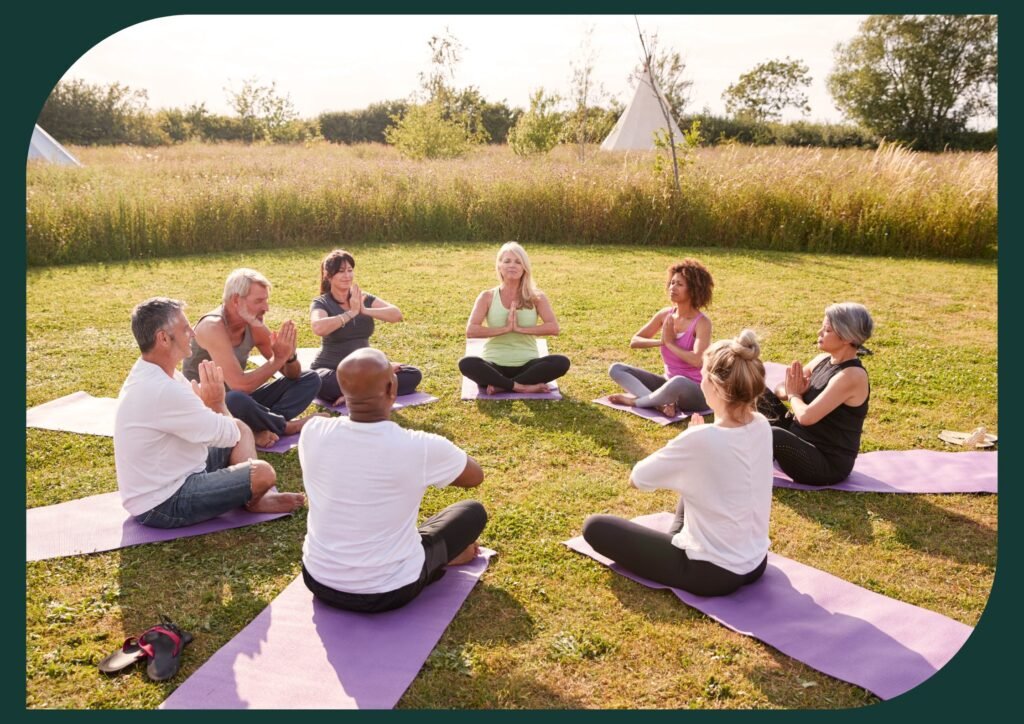
Senior Yoga and Meditation Retreats and Classes: Exploring Options
Yoga retreats and classes tailored for seniors offer a supportive environment to deepen your practice. Consider researching local senior yoga programs, retreat centres, or online classes to find options that suit your preferences and needs.
Senior yoga and meditation provide a gateway to enhanced well-being, offering numerous physical, mental, and emotional benefits. By incorporating these practices into your routine, you can cultivate inner peace, strengthen your body, and nurture your overall health. Embrace the journey of senior yoga and meditation, and discover the transformative power they hold.
Conclusion
senior yoga and meditation are invaluable tools for promoting wellness and vitality in later years. Through gentle poses, conscious breathing, and mindful meditation, seniors can experience a multitude of benefits for their physical, mental, and emotional health.
By following the tips, modifications, and techniques outlined in this article, seniors can embark on a rewarding journey of self-discovery, tranquility, and rejuvenation. The journey of yoga and meditation is deeply personal – each practice brings new insights and benefits as you continue to explore.
Have you tried yoga or meditation in your daily routine? What benefits have you noticed, or what’s holding you back from starting? We’d love to hear about your experiences!
FAQs (Frequently Asked Questions)
- Is yoga suitable for all seniors, regardless of their fitness level?
- Yes, yoga can be adapted to accommodate individuals of varying fitness levels. It’s important to start at a level that feels comfortable and progress gradually. Chair yoga, for instance, is an excellent option for seniors with limited mobility. The key is finding modifications that work for your unique body and consulting with a healthcare professional before beginning.
- Can meditation help with memory and cognitive function in seniors?
- Yes, meditation has been shown to enhance cognitive function, including memory, attention, and mental clarity. Research from 2024 indicates that regular meditation practice can contribute to improved brain health by increasing gray matter density in regions associated with memory, learning, and emotional regulation. Consistent practice has also been linked to reduced age-related cognitive decline.
- Are there any age restrictions for practising senior yoga and meditation?
- No, there are no age restrictions for practicing yoga and meditation. These practices can be beneficial at any age, and it’s never too late to start. Recent statistics show that adults over 65 make up 6.7% of yoga practitioners in the U.S., and this number continues to grow as more seniors discover the benefits of these ancient practices.
- Can senior yoga and meditation help in managing chronic pain?
- Yes, senior yoga and meditation can be effective in managing chronic pain. According to a 2025 study from ScienceDaily, 89% of respondents reported that mindfulness-based practices significantly improved their perception of pain and functional capacity. The gentle movements, relaxation techniques, and mindfulness aspects help alleviate pain symptoms and improve overall well-being.
- How often should seniors practice yoga and meditation?
- Ideally, seniors should aim for at least three to five sessions per week. Consistency is key to experiencing the full benefits of yoga and meditation. Even short, 10-15 minute daily sessions can provide significant improvements in flexibility, strength, and mental clarity. Many practitioners find that establishing a regular routine—perhaps in the morning or before bed—helps maintain consistency.
- What equipment do I need to start practicing yoga at home?
- The basic equipment needed includes a non-slip yoga mat, comfortable clothing that allows for easy movement, and possibly some props like yoga blocks, a strap, or a bolster for additional support. For chair yoga, a sturdy chair without arms is ideal. As you progress, you might want to add a meditation cushion or blanket for comfort during seated practices.
- Can I practice yoga with health conditions like high blood pressure or arthritis?
- Many seniors with health conditions can safely practice yoga with appropriate modifications. For high blood pressure, avoid inverted poses and intense breathing techniques. For arthritis, gentle movements and proper alignment are key. Always consult your healthcare provider before starting, and work with instructors who have experience teaching seniors with health conditions.
- What’s the difference between yoga and meditation for seniors?
- While yoga and meditation are complementary practices, yoga primarily focuses on physical postures combined with breath awareness, while meditation emphasizes mental focus and awareness. Both promote a strong mind-body connection, but yoga includes a movement component that enhances physical strength and flexibility. Many seniors find that combining both practices provides comprehensive benefits for overall well-being.
REFERENCES
- Davies, J.N., Faschinger, A., Galante, J. et al. (2024). Prevalence and 20-year trends in meditation, yoga, guided imagery and progressive relaxation use among US adults from 2002 to 2022. Scientific Reports, 14, 14987.
- Harvard Medical School. (2024, April 29). Yoga for better mental health.
- Harvard Medical School. (2024, January 16). Increased well-being: Another reason to try yoga.
- Harvard Medical School. (2024, February 1). Harvard study: Hot yoga may help ease depression.
- Krucoff C, Carson K, Krucoff M. (2021). Relax into Yoga for Seniors: An Evidence-Informed Update for Enhancing Yoga Practice Benefits by Reducing Risk in a Uniquely Vulnerable Age Group. OBM Geriatrics, 5(1): 150.
- Marske, C., Shah, S., Chavira, A., Hedberg, C., Fullmer, R., Clark, C.J., Pipitone, O., & Kaiser, P. (2020). Mindfulness-Based Stress Reduction in the Management of Chronic Pain and Its Comorbid Depression. The Journal of the American Osteopathic Association, 120(9), 575-581.
- National Center for Complementary and Integrative Health. (2024). Use of Yoga, Meditation, and Massage: 20-Year Trends.
- Sports & Fitness Industry Association. (2024, February 27). Number of people doing yoga in the United States from 2014 to 2023.
- Yoga Earth. (2024, January 27). 50 Blissful Yoga Statistics for 2024.
Disclaimer
The content provided on MySeniors.World is for informational purposes only and is not intended as either financial or medical advice. Always consult a qualified professional before making any investment or health-related decisions.
Posts may contain affiliate links, meaning we earn a commission – at no additional cost to you, if you click through and make a purchase. Your support helps us continue providing valuable content.

